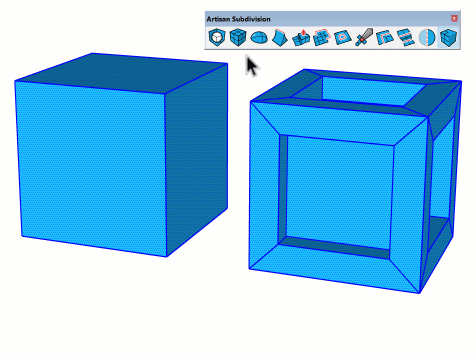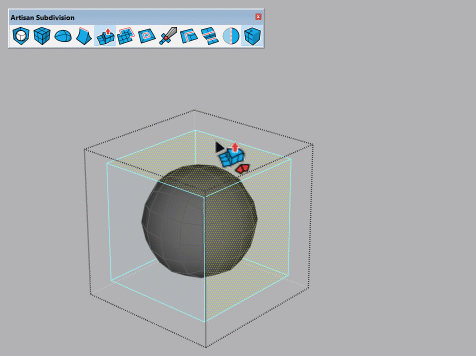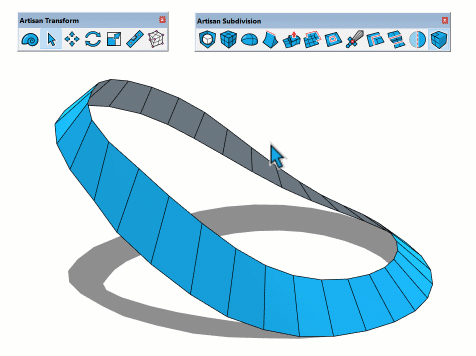Artisan 2 – Subdivision




Subdivision is a 3D modelling workflow where a simplified rough low-poly mesh is edited to produce final results on a smooth high-poly mesh. The high-poly mesh is generated by subdividing and refining (smoothing) each polygon of the mesh often using multiple iterations. In Artisan, each 4-sided polygon (quad) gets subdivided into 4 more quads. This type of subdivision is known as Catmull-Clark Subdivision.

Soft Selection is a selection mode where surrounding vertices within a specified radius are also selected but with a reduced weight factor. Vertices far from the selected vertices have the least weight and vertices closest to the selected vertices have the most weight. The weight factor affects the amount that the vertices are transformed and is indicated visually by color with red vertices having the most weight and blue vertices having the least weight.

New in Artisan 2 is the ability to model using real-time subdivision modelling where the subdivided surface (“subsurf”) gets updated in real-time as you make edits with the various Artisan tools. Simply select a group or component in your model and click the ‘Subdivide and Smooth’ button to start real-time subdivision. This mode works similarly to a “non-destructive subdivision modifier” in other 3D modeling apps.

To get the most out of Subdivision Modeling, you need to have professional quality subdivision modeling tools that are designed to work with quad-based geometry. All of the Artisan subdivision and transform tools are quad-aware and will maintain quad polygons even if they are not planar. New in Artisan 2 is full compatibility with the QuadFace quad which is the defacto standard for handling non-planar quads in SketchUp. By using this standard, Artisan quads are compatible with other plugins that use this same standard, such as QuadFace Tools.

The Extrude Tool in Artisan 2 has been given a monumental upgrade with new abilities to extrude (and thicken) multiple complex surfaces in multiple modes, all while maintaining quad-based manifold topology.
Version 2 also adds the incredibly useful Inset Tool which is comparable to the native SketchUp Offset tool but can be used on complex surfaces including non-planar quads.

The ability to add and edit loops is vitally important in subdivision modeling workflows. The position of edge-loops has a direct affect on the curvature of the subdivided mesh.
Artisan 2 adds a brand new Loop Tool which will add incredible speed and flexibility to your subdivision modeling. Add, edit, and remove loops with ease!

Sometimes, it is more convenient to work with edges rather than faces so we also added the Extrude Edges tool in version 2. Of course, it also works on complex non-planar quads surfaces.

Yes another powerful new tool in version 2 is the Bridge Tool. Connect two edge-loops to each other using quads with controls for number of divisions, interpolation mode, twist, and smoothness.

There are EVEN MORE amazing subdivision modelling tools and improvements for you to discover in Artisan 2! We haven’t even mentioned the new Make Symmetrical Tool, the improved Quad-aware Knife Tool, or upgraded Crease Tool with the ability to assign weighted creases!
There are SO MANY incredible improvements in Artisan 2, we think you’ll be absolutely blown away! The applications for these tools are literally endless! Time to find out what Artisan 2 can for you.
